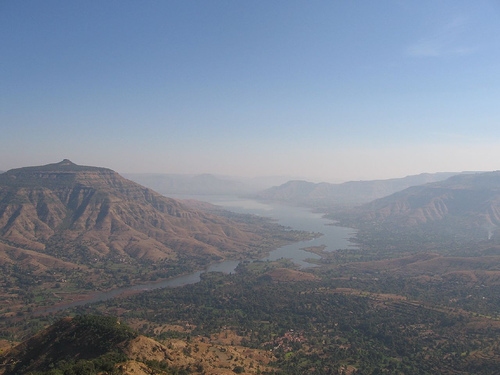knowledge
 It is now widely acknowledged that our life and what happens to us on the outside, in our relationships, at work, at home, depends on the state of our being on the inside, that is, how we think and feel and how we act, whether it be with kindness, selfishness, anger or compassion. This is because all human beings have inside them a “subtle system”, which is a blueprint that incorporates all the ways we should conduct ourselves in our lives. Our lives on the outside are a reflection of the condition of this subtle system. If we live in accordance with this blueprint and are able to balance our subtle system, then our lives will be happier, healthier and more productive.
It is now widely acknowledged that our life and what happens to us on the outside, in our relationships, at work, at home, depends on the state of our being on the inside, that is, how we think and feel and how we act, whether it be with kindness, selfishness, anger or compassion. This is because all human beings have inside them a “subtle system”, which is a blueprint that incorporates all the ways we should conduct ourselves in our lives. Our lives on the outside are a reflection of the condition of this subtle system. If we live in accordance with this blueprint and are able to balance our subtle system, then our lives will be happier, healthier and more productive.
Shri Mataji Nirmala Devi, who founded Sahaja Yoga in 1970, has given many public lectures about this subtle system and how it works. The subtle system consists of seven chakras, three channels and the residual life force, which is a dormant energy called the Kundalini which resides in the sacrum bone at the bottom of the spine.
Each of the seven chakras has certain qualities which manifest in our lives when the chakras are clear. For example, if our heart chakra is clear we will show the traits of courage and compassion in our lives. If there is a blockage in a chakra, it manifests in our lives. For example, a blockage in the Nabhi chakra may lead to us having problems with money. When the Nabhi chakra is cleared either the financial difficulties will disappear or we just won’t be worried about them any more and we will find a way to manage.
The three channels need to be in balance. When the left side and the right side are balanced we can operate in the central channel, which is the present. In order to be in the present, we need to achieve our Self-realisation, which occurs when the Kundalini rises up the central channel, through the limbic area in the brain and out of the fontanelle bone area at the top of the head to unite with the All-pervading Power of the universe.
When this happens, we become connected to the universal, Divine power that created us. We become more knowledgeable about ourselves and are able to know the state of our subtle system, our chakras and channels. As we begin to meditate and strengthen this connection after attaining our Self-realisation, we become “thoughtlessly aware” and our Kundalini flows through our chakras, clearing them. As a consequence we become better people, we automatically act in more constructive ways and all our bad habits drop out. We begin to demonstrate the positive characteristics of the chakras in our behaviour, and the positive qualities of the chakras manifest in our lives.
Recent research has shown that people are happiest when they demonstrate the “virtues” in their lives. It is already well-known that people who are happy have stronger immune systems and are healthier than those who are not. Investigation of over 200 religious and philosophical texts including the Upanishads, the Koran, ancient Greek philosophers and Christian texts has demonstrated that there are six universally accepted traits that are regarded as virtues that are revered in every society. They are wisdom, courage, compassion, judgement, self-discipline and forgiveness. The universality of these traits indicates that they are innate and are part of the blueprint of human beings. The fact that people feel happiest when they express these virtues in their behaviour also indicates that they form an innate part of the human experience.
It is time that we looked inside and looked to our roots, in order to find happiness and fulfillment that will be for our good, and for the good of our family, our town, our country and ultimately for the good of the whole world. As Shri Mataji considers it the birthright of every human being to have their Self-realisation and the knowledge of the subtle system, Sahaja Yoga is always taught free of charge.
Kay Alford
(Photograph: wikimediacommons)
Hearts a-flutter, we stand at the precipice.
What does the future hold?
Are we brave enough
To take the leap of faith
That propels us into the unknown?
With our minds grounded in human existence
We are not aware of the storehouse
Of love and knowledge and blessings
That are ready for us,
If we have the courage to take.
They are there for the asking.
They do not depend on youth or beauty
Or riches or fame.
They are not related to ambition
Or striving or greed.
They are the pure existence,
The pure blessings of Our Holy Mother,
Available to all who wish to partake,
To all who wish to join
In the throngs of people living in Love.
Melody Anderson
 The Swadisthan chakra is placed at the level of the hip and is suspended like a satellite on a cord from the Nabhi chakra (located in the area of the navel). It moves around the Void (located in the abdominal area) , giving sustenance to any weak areas.
The Swadisthan chakra is placed at the level of the hip and is suspended like a satellite on a cord from the Nabhi chakra (located in the area of the navel). It moves around the Void (located in the abdominal area) , giving sustenance to any weak areas.
The quality of Swadhistan on the right side is creativity, i.e. truly inspired thoughts, ideas and actions. The quality of Swadhistan on the left side is pure knowledge, i.e. the truly discerning and discriminating power to see the innate nature of things at a new stage in our awareness called vibrational awareness.
Sahaja Yoga affirmations to open and clear the Swadisthan chakra include, “Mother, please give me the true knowledge,” “Mother, please make me the creative knowledge,” and “Mother, verily You are the doer and enjoyer.”
At the Swadisthan chakra the energy and purity of our creativity are generated. On the right side it manifests as intellect; on the left side as imagination. These aspects integrate in the central channel creating our aesthetic sense.
The development of aesthetics was the third step in human evolution when humanity transcended the audiovisual senses. For the first time humanity entered the abstract; we could imagine, forecast and conceive of images or ideas beyond the senses. Moreover, this asthetic sense can discern true beauty, and so the Swadhistan is capable of authoring truth concepts and ideas that are auspicious, i.e. pleasing to the Divine.
To create, one first has to be a visionary. One has to have the capacity to project something beyond the three dimensions. Animals don’t have this capacity; it is a special gift to humans. The one who has true genius becomes a creative force, an avant-garde, the forerunner of society. Scientists like Einstein, artists like Monet, composers like Mozart, writers like Shakespeare are capable of inspired works. Often they proclaim their minds were vacant at the time of their in-spirit-ation, and so the meditative state is best for achieving the best inspirational ideas and activities. This is consistent with being in the “zone” of high level achievement in many endeavours including reflecting on or thinking about things.
Unfortunately, human beings have a tendency to pursue everything to extremes. The Swadisthan centre is also responsible for breaking down fat particles in the abdomen to replace the grey and white cells of the brain, thus regenerating the capacity for thinking. Non-stop thinking exhausts the right Sun/Pingala channel and swells the ego. This pushes the superego down and thus severs the connection with the central channel which is nurtured by the All-pervading Spirit, the real reservoir of creativity. Instead of a sponge, the brain becomes like a rock, losing its capacity for absorption.
The Swadisthan chakra also looks after the liver, pancreas, spleen and parts of the reproductive system. If this centre is overworked by the thinking process, the other organs it has to look after are neglected and the whole attention can really suffer.
This centre on the right is particularly important in that it is the seat of our attention. Therefore, if it is not balanced we find it hard to relax and to be in the meditation state. The quality of the left side of this chakra is true knowledge. This is a pure knowledge that is beyond the ego. When our knowledge is pure we reflect the inner beauty that is like a still and silent lake. We can locate this inner pool of truth and beauty and become the reflective channel for it.
(Photograph courtesy of pdphoto.org)
